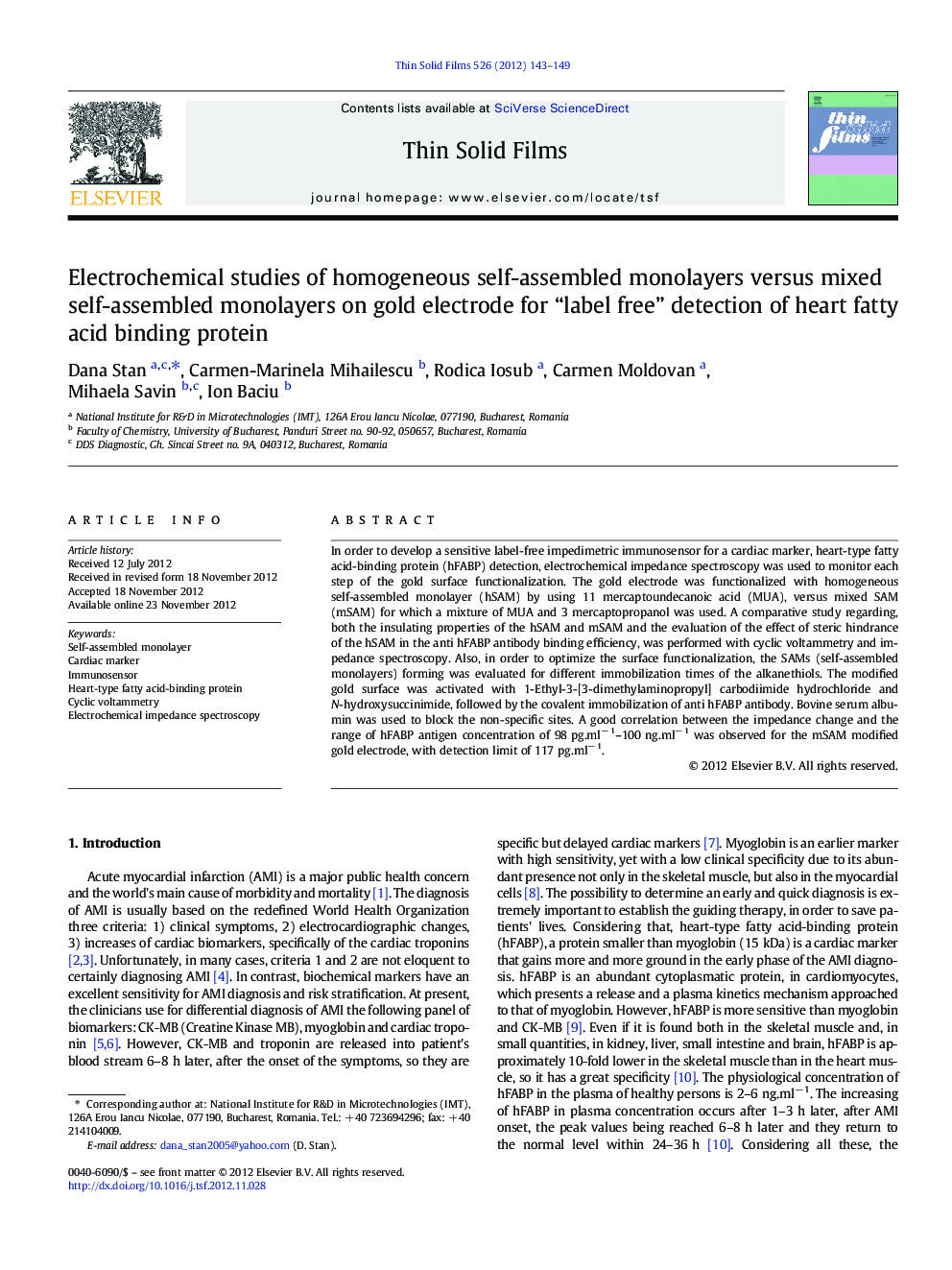| Article ID | Journal | Published Year | Pages | File Type |
|---|---|---|---|---|
| 1666457 | Thin Solid Films | 2012 | 7 Pages |
In order to develop a sensitive label-free impedimetric immunosensor for a cardiac marker, heart-type fatty acid-binding protein (hFABP) detection, electrochemical impedance spectroscopy was used to monitor each step of the gold surface functionalization. The gold electrode was functionalized with homogeneous self-assembled monolayer (hSAM) by using 11 mercaptoundecanoic acid (MUA), versus mixed SAM (mSAM) for which a mixture of MUA and 3 mercaptopropanol was used. A comparative study regarding, both the insulating properties of the hSAM and mSAM and the evaluation of the effect of steric hindrance of the hSAM in the anti hFABP antibody binding efficiency, was performed with cyclic voltammetry and impedance spectroscopy. Also, in order to optimize the surface functionalization, the SAMs (self-assembled monolayers) forming was evaluated for different immobilization times of the alkanethiols. The modified gold surface was activated with 1-Ethyl-3-[3-dimethylaminopropyl] carbodiimide hydrochloride and N-hydroxysuccinimide, followed by the covalent immobilization of anti hFABP antibody. Bovine serum albumin was used to block the non-specific sites. A good correlation between the impedance change and the range of hFABP antigen concentration of 98 pg.ml− 1–100 ng.ml− 1 was observed for the mSAM modified gold electrode, with detection limit of 117 pg.ml− 1.
► Comparative study regarding homogeneous vs mixed self assembled monolayer formation. ► Electrochemical studies were done for each step of the surfaces functionalization. ► The modified gold surface is used for a cardiac marker (CM) quantification. ► Impedance spectroscopy is used in order to a CM detection in human serum.
